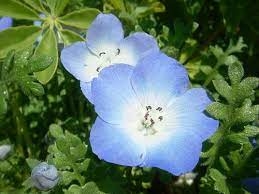A garden with a variety of plants with colorful blooms that produce pollen and nectar attracts and helps to support a variety of birds, butterflies, moths, and beneficial insects year-round. These visitors play a critical role in sustaining our ecosystem by helping our plants reproduce. Pollinator gardens provide the habitat, plants, pollen, and nectar to help us care for our wildlife partners. A pollinator garden can also give much personal satisfaction in the process so, investigate the many types of pollinators in your area and tailor your garden plans to supply their needs. In this final article dedicated to plant pollination we'll focus on plants that encourage those very important pollinating guests.
Research has shown that native bees prefer native plants in a 4 to 1 ratio, though they will feed on introduced plant species when given no other choice. In the past, flowers with showy blooms have been the ‘go to' for many gardeners. Humans enjoy the riot of color provided by various varieties of these hybrid plants. Unfortunately, we have failed to consider the pollinator's needs as many of these hybrid plants, while providing lovely visuals, are short on the nectar and/or the pollen needed to support hard working pollinators.
We have lost many wild land areas to development but we can help mitigate that loss by creating pollinator oases in our personal landscapes. In fact, recent research has shown that urban plantings have had a very significant positive influence on the native bee populations. Planting in different banks or blocks using a different pollinator friendly plant for each block creates areas where a variety of pollinators are encouraged and can load up on nectar and pollen without having to travel long distances between each flower. For example, native bees usually nest within 50 feet of their foraging sites.
When planning your garden make sure to consider the early risers and the late comers. Put in plants that bloom early in spring and some that will have flowers well into the late fall and winter. Rather than prune the dry seed pods in the late fall, leave the seeds for the winter foragers. Think of it as a slowly rotating smorgasbord for all those wonderful pollinator workhorses. Also, a garden set up like this will provide you a wonderful changing panorama as these cycles progress through the seasons.
California has many diverse native plant species available that are tailor-made to support our native pollinators. Here area few examples of early and late bloomers:
v Early bloomers
- Herbaceous flowering plant
- Baby blue eyes Nemophila menziesii is a low growing annual with low water needs. It has stunning sky blue flowers that attract native bees, including mason bees (Osmia spp.); tolerates moderate shade and moisture
- Shrub
- McMinn manzanita Arctostaphylos ‘McMinn' is a tall (5ft) perennial with low water needs. It has clusters of small, bell-shaped flowers that provide early season forage for bumble bees and other spring bees and will tolerate clay soils
v Early-mid bloomers
- Herbaceous flowering plant
- The iconic
- is an annual that is also a perennial because of its prolific self seeding properties. With its low water requirements it is easy to establish and long blooming; attracts a diversity of bees, bumble bees in particular.

- Shrub
- California flannel bush Fremontodendron californicum a low water perennial that can reach 15 ft. It is a prolific bloomer with large, bell-shaped yellow flowers. It does not need summer water.
v Mid bloomers
- herbaceous flowering plant
- Narrowleaf milkweed Asclepias fascicularis is a 12-18 9nch tall perennial with medium water needs. This is a Monarch butterfly host plant and it's a high-quality nectar source for many bees. It is easier to establish from transplants than from seed.
- ShrubCalifornia buckwheat Eriogonum fasciculatum
- is a perennial that grows to about 30 in high and drought tolerant. It is a favored nectar source of many blue and hairstreak butterflies and also very attractive to native bees.

v Mid-late bloomers
- Herbaceous flowering plant
- Common sunflower Helianthus annuus is a very tall (5 ft) annual with medium water needs. A favorite of many bee species and easy to establish. It is tolerant of clay soils.
v Late bloomers
- Herbaceous flowering plant
- California fuchsia Epilobium canum is a medium tall (3ft) perennial with low water needs. It has abundant scarlet-colored flowers and is a critical late-season nectar source for hummingbirds and bees.
For more information on these and many more California native plants: Xerces.org-plants for pollinators
There are many pollinator plants that aren't California. natives. Some of the best non-native, pollinator-attracting annual and perennial flowers are: agastache, ageratum, allium, betony, catmint, cornflowers, cosmos, lavender, Mexican sunflowers, pentas, Russian sage, salvia, sedum, verbena, veronica, yarrow, and zinnia. Use these plants to round out your garden and create diversity in your landscape. Contrary to popular belief pollinator attractive plants don't have to be herbaceous flowering plants; they can also be herbs that you allow to flower. Let your dill, parsley and other herbs 'bolt' or go to flower, then stand back and watch the pollinators enjoy themselves.
We hope the information in this series can be an inspiration to create a pollinator garden of your very own. Having a pollinator friendly landscape will not only benefit the pollinators, it will give you hours of entertainment and contribute to a healthy environment in your own backyard.
Information links: Las Flores Learning Garden-Plants for Pollinators
Napa Master Gardeners are available to answer garden questions by email: mastergardeners@countyofnapa.org. or phone at 707-253-4143. Volunteers will get back to you after they research answers to your questions.
Visit our website: napamg.ucanr.edu to find answers to all of your horticultural questions.
Photo credits:
LFLG pics all taken by MGs: Las Flores Learning Garden-Plants for Pollinators



